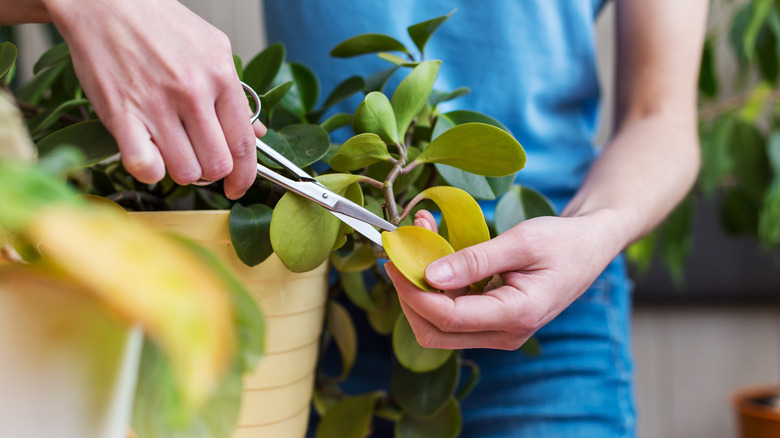TikToker Shares The Major Houseplant Pruning Mistake You'll Want To Avoid
Even though we put a lot of love and effort into tending to our houseplants, accidents can still happen. Stems can break when plants fall off their stands or if kids or pets play with them. If you find yourself in this situation, assessing the damage will help guide the next steps. A stem that isn't wholly severed may be reattached so it can come back to life. However, if it's too late, the broken piece needs to be removed. One major pruning mistake often made during this process is cutting the broken limb off closer to the leaf when it should be cut as close to the main stem as possible.
People usually cut right where the stem broke, but this doesn't help because the stub that's left behind will die. The awkward stump will be unable to grow and will become vulnerable to diseases which can lead to the death of the whole plant. Instead of cutting it at the main point of breakage, TikToker @tannertheplanter explains that you should always cut closer to the main plant. He explains further in the caption that stems are like cords and leaves are like solar panels, so having the cord without a leaf can be seen as a waste of energy.
Don't leave a stub when pruning
A broken stem should be cut all the way back to the soil line or to the point where it grows out from the main plant. By leaving a long stump, you open the plant up to disease and rot, so cut appropriately to rule out this possibility. This will also give the plant a chance to grow a new stem that is strong and healthy. In addition to pruning at the right spot, ensure that you make a clean cut with disinfected tools. This is important because a rough cut heals slower than a neat one, and tools can spread diseases from other plants.
Furthermore, cutting off a long stem doesn't have to feel like a loss because the houseplant piece can be propagated to grow a new plant. When you cut it off, also cut off any flowers, buds, and leaves on its lower part because that's the part that will be planted. Apply some rooting hormone powder or gel to the freshly-cut edge, plant it in some new soil, and wait for it to begin to root.
